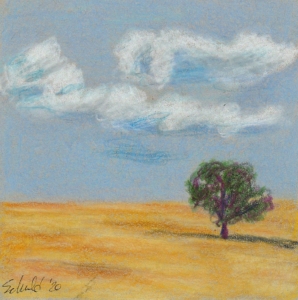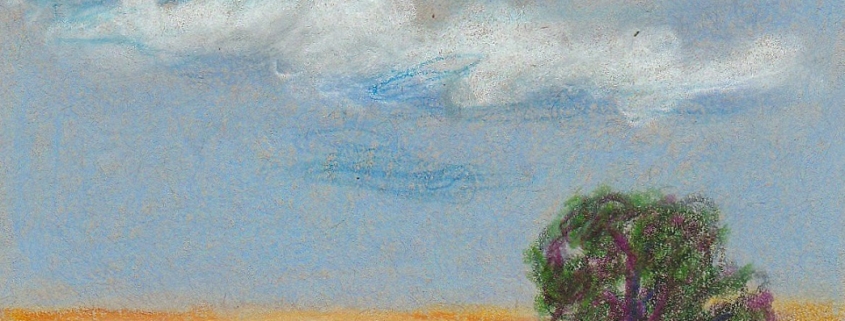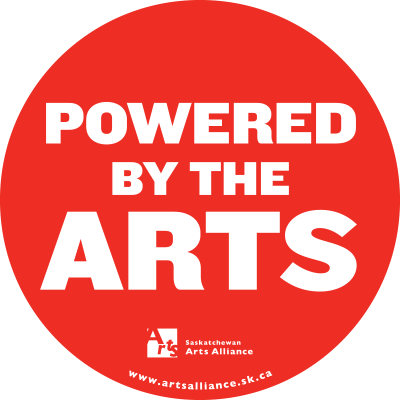Making Art in the Middle of Nowhere – Challenges of being a Rural Artist
Making Art in the Middle of Nowhere – Challenges of being a Rural Artist
Art can be made everywhere. But being an artist also involves being a part of a community, exposing oneself to new ideas and other forms of art and expression, and receiving feedback from others in order to grow as an artist. If you happen to live in an urban area, access to such resources is fairly simple – go to a Wednesday night painting group, hang out for an afternoon at the local gallery or join the board of an arts advocacy organization. This is not the reality for rural artists.
Rural artists face unintended barriers at almost every turn. In a world of near constant communication, it is still possible to be physically and digitally isolated if you live outside of urban hubs. Rural artists often lack a network of peers and mentors and this may have a slowing or stalling effect on an art career. Without connections, opportunities for growth, for exhibition and for collaboration become limited.
I am a rural artist – this is both by choice and by circumstance. I am a rural person by nature and my inspiration comes from the landscape, creatures and people that live around me. I am also actively involved in the business of growing food which, of necessity, happens in rural areas. This does not alter my desire to be part of a greater whole, to meet other artists, share ideas and participate in a community of creative people. In an increasingly urbanized world this is becoming an ever-greater challenge.
Challenges that rural artists face when compared to their urban counterparts are many and complex but it starts with communication. High speed internet and cellular connections are an incredible challenge in rural areas with many areas having spotty to non-existent coverage of both services. Added to that, the cost is generally higher than equivalent service in urban areas. Increased urban connectivity has increased the number of meetings, events, and opportunities that occur online rather than in person. Add to that the complications of a worldwide pandemic, and the move to virtual platforms has been exponential. If you do not have access to high speed internet services, these opportunities do not exist.
This has left many in rural areas out in the cold. I have had to turn down offers to promote my work or share my expertise because I do not have access to the Wi-Fi bandwidth necessary to participate effectively in events that are now commonplace in cities and towns, like online courses or virtual round table proceedings. I struggle with professional development because where I live limits what is available to me in terms of training and post-secondary education. Many rural artists experience this kind of isolation as well as the puzzled lack of understanding when one says “I can’t use Zoom” or “I can not download files of that size”.
For rural artists, participating in events is also a matter of time and distance. Attendance, in person, often requires many hours on the road, hotel and food costs and time away from family, studio or other jobs. A three-hour evening meeting becomes a three-hour drive, dinner, three-hour meeting, hotel, breakfast and three-hour return trip home – often more than a 24-hour commitment. For the equivalent participant living in the city, it is simply a three-hour meeting. The same goes for access to art museums, courses, or specialized collectives. Decisions to participate have to include time commitment, travel distances and weather conditions, as well as attendant costs.
Don’t get me wrong, those of us living in more remote areas are used to the imbalance and for the most part, are accepting of the reality of it. It still makes sense to go to where the majority are. The question is this: Can we start to meet the minority part way? Can we acknowledge there is a difference of experience and work toward reducing the imbalances inherent in a place where urban and rural both need to exist? Simply becoming aware of and acknowledging the challenges and limitations that rural artist’s face would be a huge step in the right direction.
I do not have the answers to all the issues ready at hand. I feel a starting point would be to have a better understanding of how many rural artists are out there, working in isolation and seeking a broader community. From that point an exchange of experiences, ideas and solutions can grow. Can we foster new programs that support isolated artists? Mentorships, residencies, distance studies, access to collections, group forums, studio visits – all these and more can aid in narrowing the gap between rural and urban.
 I live in a place that inspires me and is a muse for artistic expression. I also live in a place where animals outnumber people, roads aren’t paved and businesses refuse to deliver to a post box. I live three hours drive from the nearest major cities and five kilometers from my closest neighbour. But I still want to participate in a broader arts community. I have things to contribute, techniques to learn, opinions to share and questions to ask. I am a firm believer that in all things, art included, the sum of all of our experiences is what makes life interesting.
I live in a place that inspires me and is a muse for artistic expression. I also live in a place where animals outnumber people, roads aren’t paved and businesses refuse to deliver to a post box. I live three hours drive from the nearest major cities and five kilometers from my closest neighbour. But I still want to participate in a broader arts community. I have things to contribute, techniques to learn, opinions to share and questions to ask. I am a firm believer that in all things, art included, the sum of all of our experiences is what makes life interesting.
Marsha Schuld is an intermedia artist living and working from her farm studio in rural southwest Saskatchewan.
Rural Artists Working Group (RAWG) – The Saskatchewan Arts Alliance, along with rural artists, are working on the creation of a Rural Artists Working Group (RAWG). This group will tackle issues around isolation, professional development, and connecting provincial artists and arts communities of all disciplines. If you are interested in participating, please contact info@saskartsalliance.ca.



